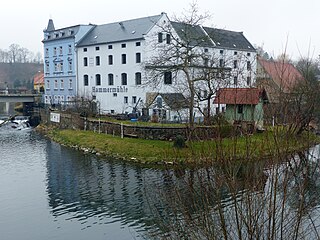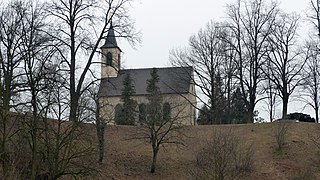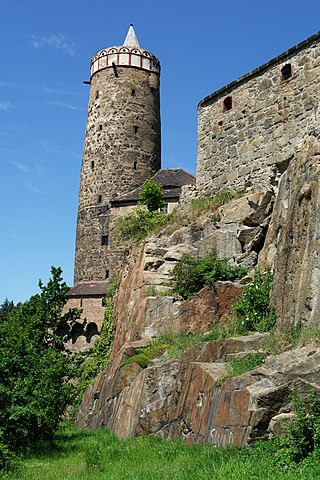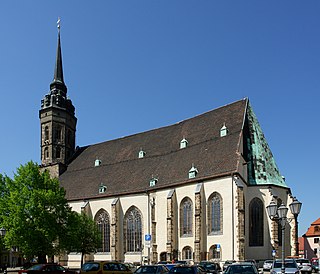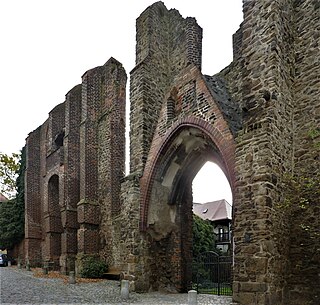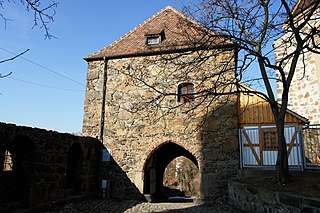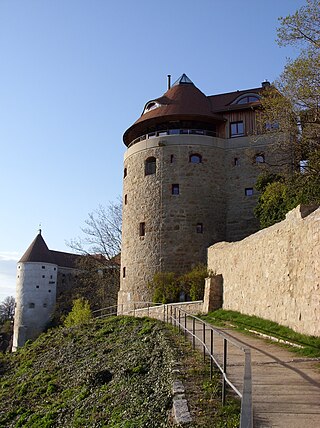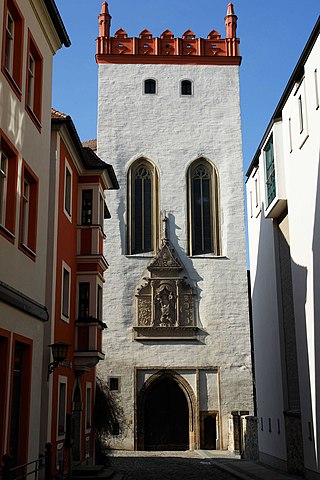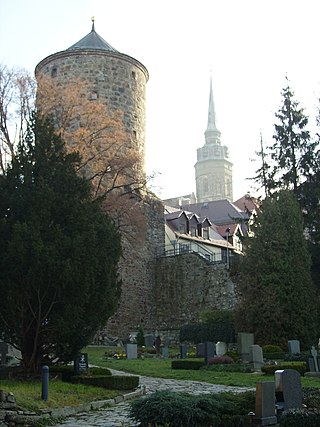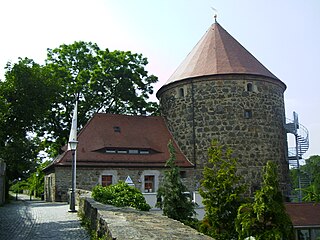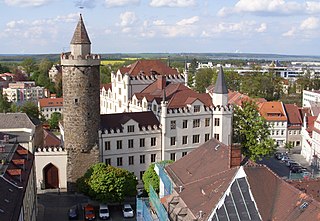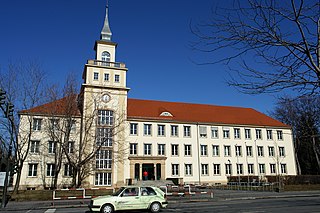Self-guided Sightseeing Tour #2 in Bautzen, Germany
Legend
Tour Facts
5.7 km
146 m
Experience Bautzen in Germany in a whole new way with our self-guided sightseeing tour. This site not only offers you practical information and insider tips, but also a rich variety of activities and sights you shouldn't miss. Whether you love art and culture, want to explore historical sites or simply want to experience the vibrant atmosphere of a lively city - you'll find everything you need for your personal adventure here.
Individual Sights in BautzenSight 1: Hammermühle
The Bautzen hammer mill was built in 1493 by the city of Bautzen on the Spree as a wire mill, i.e. for the production of wire via wire drawing benches. In 1740, the mill was expanded to include an iron hammer mill. Today it is located north of the old town on the border with the district of Seidau and is at the same time a mill, oil mill and mustard mill.
Sight 2: Protschenberg
The Protschenberg (German) or Hrodźiško is a hill in Bautzen in the state of Saxony, eastern Germany.
Sight 3: Alte Wasserkunst
The Alte Wasserkunst, Sorbian, is a building in Bautzen that used to serve the city's water supply.
Sight 4: Friedensbrücke
The Peace Bridge in Bautzen is one of the larger stone arch bridges in Saxony and, along with the A 4 motorway bridge and the bridge of the Westtangente, one of the three most important connections for road traffic in the city crossing the Spree. The four basket arches, which are placed on massive pillars and abutments, span the deeply incised and steep-walled Spree valley at a height of over 20 metres over a length of 181 metres.
Sight 5: Lauenturm
The Lauenturm, Sorbian, is part of the city fortifications of the city of Bautzen. It is located on the southern edge of the old town, on the western side of the Innere Lauenstraße, which leads from the Friedensbrücke to the town hall. The tower got its name from the heraldic animal of the Kingdom of Bohemia, a lion. If you left Bautzen in the direction of Bohemia, you had to cross the Lauentor.
Sight 6: Rathaus Bautzen
The town hall of Bautzen is located between the main market and the meat market in the middle of Bautzen's old town. The construction of the first permanent council seat on this site goes back to a decree of the Bohemian King Ottokar I Přemysl, which allowed Bautzen to build "a particularly stately stone house" here.
Sight 7: Cathedral of St Peter
St. Peter's Cathedral is an interdenominational church in Bautzen, Germany. It is among the oldest and largest simultaneum churches in Germany. Located in the heart of the city's "Old Town", the church and the square it is situated within is a major tourist attraction.
Wikipedia: Cathedral of St Peter, Bautzen (EN), Website, Website
Sight 8: Cathedral Chapter
The cathedral chapter or Bautzen cathedral monastery was the governing body of the cathedral of St. Petri in Bautzen in administrative and liturgical matters.
Sight 9: Ruine Mönchskirche
The Monks' Church, Sorbian Mniša cyrkej, is a former monastery church of the Franciscans in the old town of Bautzen.
Sight 10: Mönchsbastei
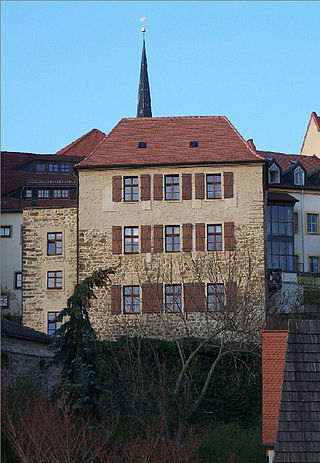
The Monks' Bastion, Sorbian, is one of the seven bastion towers of the city fortifications of Bautzen. It was built around 1324 as a rectangular tower.
Sight 11: St. Michael Church
The Michaeliskirche in Bautzen is located near the old water art on the southwest arch of the rock spur over the Spree, on which the old town of Bautzen was built. The place between the church, the water art and the inner and outer city wall is referred to as the Wendischer Kirchhof, since the Michaeliskirche has mainly served as a church since the 17th century the Protestant Sorbs of the Bautzen area.
Sight 12: Mühltor
The Mühltor, Sorbian, is a city gate in Bautzen.
Sight 13: Mühlbastei
The Mühlbastei, Sorbian, is one of the seven bastion towers of the city fortifications of Bautzen. The four-storey round tower was built around 1468 and got its name from the Ratsmühle, which was later built below the tower on the Spree.
Sight 14: Rietschelgiebel
The Rietschel gable is a work created in 1840 by the sculptor Ernst Rietschel. The group of figures originally attached to the north wall of the first court theatre in Dresden with the title "Allegory of Tragedy" can now be seen at the Burgtheater on the Ortenburg in Bautzen.
Sight 15: Serbski muzej - Sorbisches Museum
The Sorbian Museum, Upper Sorbian: Serbski muzej, German: Sorbisches Museum, is hosted in the salthouse of the Ortenburg, Bautzen. It houses approximately 35,000 inventarized objects, making it the most important museum of Sorbian culture and history.
Sight 16: Matthiasturm
The Matthias Tower (Upper Sorbian: Maćijowa wěža) is a gate tower in Bautzen and the main entrance to Ortenburg Castle.
Sight 17: Nicolaiturm
The Nicolaiturm (Sorbian) is a gate tower and part of the northern city fortifications of the city of Bautzen. It is located directly at the Nicolai cemetery with its Nicolai church ruins.
Sight 18: Nicolaifriedhof
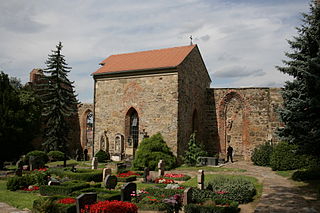
The Nikolaifriedhof is a Roman Catholic cemetery in Bautzen's old town, which has existed since 1455. It is located in the ruins of the former Uhyster Church and its surroundings in front of the Mückaer Tor on the northern edge of the old town, high above the Spree and not far from Bautzen Castle. The church itself was destroyed in the Thirty Years' War during the siege of Bautzen by the Saxon army in 1620. Since 1745, the ruins themselves have also been used as a cemetery. Since 1852, there has been a small chapel at the Nikolaifriedhof for dull evenings and funeral services.
Sight 19: Gerberbastei
The Gerberbastei, Sorbian, is part of the historic fortifications in the old town of Bautzen. It secured the section between the Nicolai Tower and the Schülerturm on the north side of the city and protected the crossing of the Via Regia over the Spree and the paths into the city as well as the Zwinger behind the inner city wall.
Sight 20: Schülerturm
The Schülerturm (Sorbian, or Schülertor) in Bautzen is a gate tower on the northern edge of Bautzen's old town. It is a listed building.
Sight 21: Wendischer Turm
The Wendish Tower, Sorbian, is part of the medieval city fortifications of Bautzen. It is located on the northeastern edge of the old town and is now structurally connected to Gottfried Semper's Old Barracks. For centuries, the Via Regia ran through the adjoining Wendish Gate, which no longer exists.
Sight 22: Reichenturm
The Reichenturm (Upper Sorbian: Bohata wěža) is a building of the former city fortifications of Bautzen. It is located on the eastern edge of the old town, forms the end of Reichenstraße and stands on the Kornmarkt, opposite the Liebfrauenkirche. It is open from April to October.
Sight 23: Kursächsische Postmeilensäule
The listed Electoral Saxon postal milestone in Bautzen is one of the postal milestones that were erected in the Electorate of Saxony in the first half of the 18th century by the Land and Border Commissioner Adam Friedrich Zürner on behalf of the Elector of Saxony Friedrich August I. It is an incomplete whole mile column. It is located on the corner of Kornmarkt/Rosenstraße, not far from the Reichenturm in the district town of Bautzen.
Sight 24: Unserer Lieben Frauen
The church of our dear wife in Bautzen is a Catholic church that is largely used by Sorbian -speaking parishioners and belongs to the cathedral parish community of St. Petri. It is located outside the former inner city wall, east of the Reichenturmes on the historic salt market.
Sight 25: Serbski dom - Haus der Sorben
The Serbski dom is an administrative building on Postplatz 2 in Bautzen, Saxony, Germany. It is the cultural and political center of the Sorbian people. It was built between 1947 and 1956. It is the seat of Domowina and the Foundation for the Sorbian People.
Sight 26: Berufsakademie Bautzen
The Staatliche Studienakademie Bautzen is one of the locations of the Berufsakademie Sachsen and emerged from a polytechnic educational institution founded in 1827. Since then, more than 12,000 graduates in the business and technical fields have been prepared for the demands of the job market. A special feature of the training is the dual principle, which integrates the practical training content into the academic training. Scientific-theoretical and practical teaching content is coordinated in terms of content and organization. This combination of science and business enables students to apply the knowledge they have acquired directly in practice.
Sight 27: Taucherfriedhof
The Taucherfriedhof is the largest cemetery in Bautzen. It is located east of the old town in the Nordostring district between Löbauer Straße in the south and Bad Muskau in the north.
Share
Disclaimer Please be aware of your surroundings and do not enter private property. We are not liable for any damages that occur during the tours.
GPX-Download For navigation apps and GPS devices you can download the tour as a GPX file.
